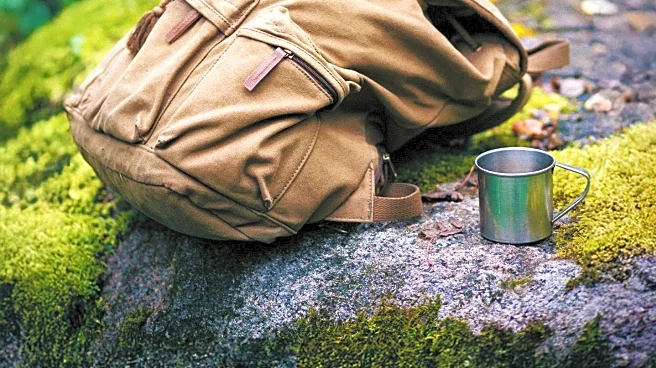What's Happening?
A shopper in Georgia made an unexpected discovery after purchasing a backpack from a Goodwill thrift store for $12. Upon inspecting the backpack at home, the buyer found it contained a Thermarest compressible pillow, a Thermarest mat, a tarp poncho, mittens,
a beanie, and a Marmot Sawtooth 15 sleeping bag, collectively valued at approximately $500. This incident highlights the potential for finding valuable items while thrifting, a practice that spans generations and serves various purposes, including environmental conservation, cost savings, and creative exploration. Thrifting is increasingly popular as it offers affordability, with items typically selling for a fraction of their original retail price. The Environmental Center at the University of Colorado emphasizes the importance of reusing and recycling textiles to reduce landfill contributions, as the U.S. generates an estimated 26 billion pounds of textiles annually.
Why It's Important?
The discovery underscores the environmental and economic benefits of thrifting, which helps reduce textile waste and offers consumers affordable alternatives to new products. The fashion industry is a significant contributor to global pollution, responsible for 10% of carbon emissions and being the second-largest consumer of water. By purchasing secondhand items, consumers can mitigate these environmental impacts. Additionally, thrifting supports a circular economy, encouraging the reuse of goods and reducing demand for new manufacturing, which is resource-intensive. This practice not only benefits the environment but also provides financial relief to consumers, making it an attractive option for those looking to save money while minimizing their ecological footprint.
What's Next?
As thrifting continues to gain popularity, more consumers may be drawn to secondhand shopping for its environmental and economic advantages. This trend could lead to increased demand for thrift stores and secondhand marketplaces, potentially prompting more businesses to enter the sector. Additionally, as awareness grows about the environmental impact of the fashion industry, consumers may increasingly prioritize sustainable practices, influencing manufacturers to adopt more eco-friendly production methods. The ongoing shift towards sustainability could also inspire innovations in recycling and upcycling, further reducing the environmental footprint of consumer goods.
Beyond the Headlines
The rise of thrifting reflects broader cultural shifts towards sustainability and conscious consumerism. As individuals become more aware of the environmental impact of their purchasing decisions, they may seek out alternatives that align with their values. This cultural change could lead to a reevaluation of consumption patterns, encouraging more people to consider the lifecycle of products and the importance of reducing waste. Furthermore, the popularity of thrifting may inspire creative approaches to fashion and design, as consumers explore unique and personalized styles through secondhand items.















